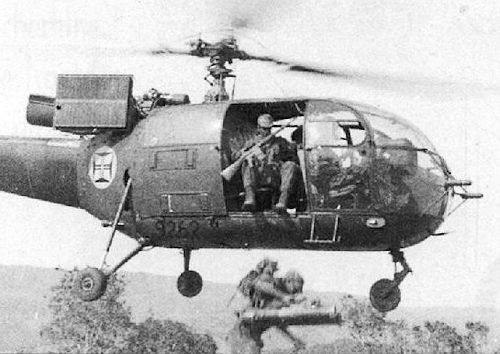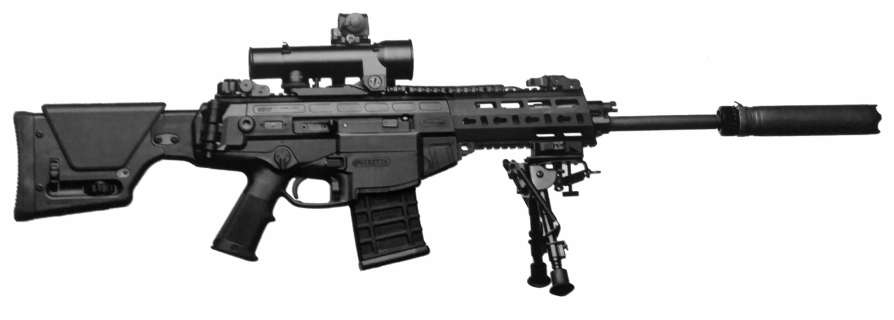In 1954 the Armalite Division of the Farchild Engine & Airplane Company began development of a chambered assault rifle with the 7,62x63mm caliber.
The following year, when engineer Eugene Stoner joined the company, the orientation had changed in favor of NATO 7,62x51 mm (.308) ammunition.
However, the working group of the Armalite, led by Stoner, did not accept slavishly following schemes and designs of traditional small arms. The designers presented a revolutionary weapon design for the time, a linear-configuration assault rifle with a built-in aiming device. Such a portable weapon had a locking system with a rotating bolt.
The new rifle was presented in 1955, with the designation of AR-10.

In its construction, aluminum was widely used (the only steel parts were the barrel, the bolt and the bolt carrier). It therefore turned out to be a light weapon, even too much, as in burst shooting it tended to rear up (detection). To remedy this defect it was necessary to install a compensator at the muzzle of the barrel.
The cocking lever was located on the upper part of the castle, protected by a carrying handle which also served as a support for the aiming device.
The project envisaged that the AR-10 would be variants such as submachine gun and light machine gun, but they remained only at the prototype level.
The preparation of the production lines suffered severe delays, nor did the AR-10 play in favor of the fact that by the time it appeared on the scene, the NATO countries had already made their decisions regarding the rifles to be adopted.
Some lots were sold to Portugal which used the AR-10 in the colonial wars in Angola (next photo) and Mozambique. Even the GOI of the Navy adopted some specimens in the 60s of the last century.

The largest lot, through the Dutch company NWM, was sold to Sudan.
The Armalite AR-10 had a weight (load) of 4,8 kg (the Beretta BM-59 was abundantly over 5 kg in weight) for a total length of 103 cm (with 20-inch barrel); the initial speed was 845 m / sec. (V₀). and it could deliver a theoretical rate of fire equal to 700 rounds / minute (feeding was guaranteed by a 20 round box magazine).
The introduction into service of the 5,56x45 mm ammunition seemed to relegate the larger caliber to the accompanying machine guns only. Indeed, with LMGs (Light Machine Guns) such as the Minimi it seemed that the 7,62x51 mm caliber should disappear from the infantry platoons (in the 90s the Italian Army had the absurd idea of recalibrating the MG-42/59 with 5,56; fortunately project remained at the prototype-only stage). However, the Afghan theater has revived the 7,62 caliber and platforms on the AR-10 model.
The large firing distances and the comparison with the light armament of the Taliban militias, mostly consisting of former Soviet rifles and machine guns (such as AKM, RPD, PKM) in caliber 7,62x39 mm and 7,62x54R mm, highlighted the poor performance ballistics of 5,56 x45 mm NATO. Hence the reintroduction into service, in infantry squads, of small arms in caliber 7,62x51 mm (.308 NATO).

Western armies began introducing, as early as the end of the first decade of the 10st century, models inspired by Stoner's AR-25, such as the semi-automatic SR-110, M-129 SASS (Semi-Automatic Sniper System) and L1AXNUMX (photo) supplied to British Army infantry squads.
At the same time, the so-called “battle rifles” were also adopted, such as the 417x7,62 mm H&K 51 automatic.
Even the Italian Army, historically not very reactive in accepting the teachings of operational theaters, has introduced the Beretta ARX-200 (bottom photo) in 7,62x51 mm caliber into the infantry squads.
Stoner's AR-10 project probably had the only flaw of being too far ahead of its time, but field experiences have shown that his idea was absolutely valid.

Photo: Le-boulanger / Imgur / web / Crown Copyright / Italian Army












